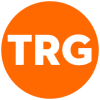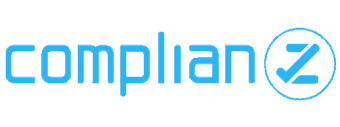Executive Thought Leadership: An Important Investment for 2023

You are reading through your morning news when a story piques your interest about how to tell whether respiratory symptoms signal COVID-19 or the flu or RSV. You begin to read the article in more detail and notice that a physician from another health system is quoted as the main expert in the article.
You are scrolling through LinkedIn and see a post about an executive at a competitor organization who has won Modern Healthcare’s 100 Most Influential People in Healthcare.
You are checking your email and notice several promotional emails from major industry meetings, including HLTH, ViVE and Becker’s Annual Meeting. When you click and scroll through the confirmed speakers you notice several notable names of other health care executives from other organizations who are confirmed as speakers.
All these situations are thought-leadership opportunities which can be capitalized on to build the reputation of your organization and its key executives. And, if any of these situations sound familiar, you may want to start thinking about making a bigger investment in building your organization’s thought-leadership platform.
So what exactly is thought leadership? It’s the process of publicly establishing an organization or an individual as a recognized authority within a particular industry or on a particular topic. It occurs when an organization or individual’s opinions and advice become widely accepted and valued as a trusted source for perspective on an important subject.
Building a successful thought-leadership platform does not occur overnight. You must be in it for the long game and understand that establishing credibility and clout can take years of cultivating relationships, carving out areas of expertise and identifying the right opportunities to showcase members of your leadership team. While you likely will not see dividends from your effort very quickly, you must stay the course because your investment will eventually pay off by helping to:
- Create visibility for your executives and, in turn, your organization,
- Position your executive as a leader in the health care industry,
- Establish your executive and organization as the go-to source for reporters,
- Build lasting trust with key stakeholders, and
- Open doors to new opportunities for engagement with other top minds/organizations in the health care industry.
I’ll give you two examples. One TRG client is an Alzheimer’s research institute that has become world-renowned. This scientific organization had been doing groundbreaking work for more than a decade, but it was not on the national radar screen of the leading health care reporters because they had not yet made a strategic investment in becoming recognized thought leaders. Through their engagement with TRG and our work to build the reputations of both the organization and its key leaders, the client is now a go-to source for every major national reporter from The New York Times to The Associated Press to NPR whenever breaking news occurs about Alzheimer’s. Another client is a children’s health system that is paving the way for a new approach to whole person care. Changes in their executive leadership meant rebuilding and re-establishing the health system as a leading source. After several years working to establish their new executives as go-to sources, they are now frequently sought after for speaking opportunities at major industry meetings and widely quoted in the media and recognized with top industry awards.
So, what can you do to raise your executive team’s thought-leadership profile? Here are four tips to consider as you get started.
- Carve out a specific area of issue expertise.
This is a crucial first step to building any thought-leadership platform. You must establish which particular topic/area of expertise you want to be known for and have the most information to contribute to. It’s important to determine where your executive/organization can provide a unique perspective that adds value and depth to the public conversation and doesn’t just repeat the current discussion. You must be able to provide fresh ideas and thinking so that people want to hear what you have to say.
- Start small and set realistic expectations.
It’s unrealistic to think your executive will be the keynote, mainstage speaker at a major industry event right off the bat. You need to recognize this and identify opportunities to help build your executive’s credibility, so they become a more sought-after speaker. Look for opportunities such as a panelist or even a moderator at smaller industry-focused meetings so you can begin to establish that credibility and use it as a steppingstone for more prominent opportunities.
- Keep a running list of opportunities.
This may sound like an oversimplified piece of advice, but missing deadlines can hinder your ability to build a thought-leadership platform. Many speaking engagements and award opportunities have ongoing deadlines throughout the year. For example, a meeting scheduled for September might have a submission deadline in March. Make sure your tracker is up to date and that you are constantly looking for out-of-the-box opportunities that may put your executive in front of an important key audience. Sometimes, the quality of people in the room is worth more than the quantity.
- Never underestimate the power of social media.
Building your executive’s social media presence is another important way to build their credibility and clout, helping them to make connections with key audiences. Working with them to share an interesting perspective related to a news article on LinkedIn can help expose your executive and your organization to new stakeholders. Additionally, working with your executive to retweet relevant news articles can help build reporter connections as many reporters are held accountable for the virality of their articles.
An investment in thought leadership can reap huge benefits for both your executives and your organization but remember to be patient with the process. Your hard work will eventually pay off!




